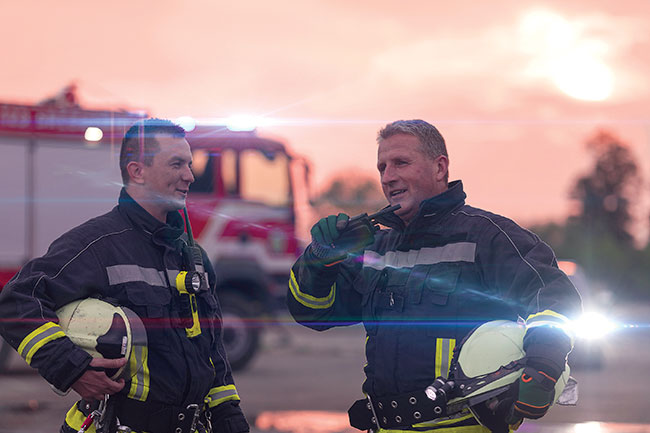
Front Seat: The art of communication – Strategies for members of the fire service
By Jason Clark
Features canadian firefighter firefighter firefighter training First Responders Photo: .shock / Adobe Stock
Photo: .shock / Adobe Stock If you’ve ever held a leadership role in the fire service, you’ll know that quite often you’ll find yourself working with a wide variety of people and stakeholders. We have our agency partners, citizens and team members all making up various the groups that may work together very well to achieve a common goal or mission objective. Usually, when there is a positive outcome, it is because the entire group worked together – I link it back to positive, professional attitudes and team members who are willing to adapt and work through the various challenges that are presented to them.
Then you have the opposite side of that example where there is more of a ‘difficult’ person or group to interact with, and there are a few different ways to engage and work through the encounter. I have seen many interactions both in person and caught on camera that don’t necessarily paint the members of the fire service in a very professional manner when they were communicating with certain individuals. We understand that when on a call, adrenaline can run high, and it can be a fast-paced environment where we don’t take the time to have one-on-one back and forth communication exchanges with the people we serve or work alongside.
When a promotion comes along for a position where you need to supervise or oversee staff, the organization is trusting you to make decisions. It may be a big part of your position, alongside how you manage the day-to-day operations, depending on your rank in the fire service. Part of your role may also require that you interact with team members, the general public and other agency representatives regularly.
Early on in my acting captain days, I had a particular interaction with a member of the public. Overall, it was a respectful interaction without shouting, but it did feel like it was a situation where there wouldn’t be any winners in the end.
We got called to a monitored alarm in a residence but arrived to find nothing outward. After we did our investigation, it was deemed a false alarm due to faulty equipment. There were three trucks on the initial response and a lot of flashing lights, and this individual—a neighbour to the house we were called to—explained to me that it was wasted time and resources. They continued to give me their opinion from a distance as I put my equipment away. They told me their thoughts about the flashing lights and the loud diesel engines that were bothering them on their street.
Try to avoid debating the details and keep the conversation moving with the statement of facts.
Ultimately, I wasn’t going to make excuses or explain our response procedures and get into a debate on the side of the road. Instead, I approached the person but maintained a good distance from them on the front lawn, and acknowledged the concern. I informed them that we were done, everyone was safe, and we would be clearing off and leaving the neighbourhood momentarily.
When you deal with people who are set on challenging you or communicating their displeasure, and they are our ‘customers’ or our members of the public, we have to keep that customer service side front of mind, even if we aren’t a monetary exchanging business.
Not every encounter will be as open and closed as my encounter with the person on the sidewalk and it may be beneficial to figure out why they want to challenge you. This can be helpful during burn complaints to explain why a campfire must be put out during a fire ban, or if they are burning improper materials, etc. You may have to explain the safety concerns and the subsequently why your crew was called.
Try to avoid debating the details and keep the conversation moving with the statement of facts.
There is an old saying that “the customer is always right” – and the customer is usually right in their own mind and argumentative stance. Time spent debating and discussing may not change that person’s views or make them realize that, maybe, they aren’t right.
When you are designated as a leader in the fire service, you are often tasked with making decisions, and using your judgement and training to make those decisions. You will encounter roadblocks and struggles with the stakeholders we work with and will need to mitigate those in a professional manner. Having a positive attitude and professional demeanor goes a long way – and often helps us find that middle ground in those not so open and closed discussions.
Jason Clark has been a volunteer firefighter in southwestern Ontario since 2007. Having made the transition from firefighter to captain, Jason shares perspective on roles in the fire service and riding in the front seat. Contact Jason at jaceclark71@gmail.com or @jacejclark.
Print this page
Advertisement
- Alberta partnering with AI company to try to predict wildfires before they ignite
- Sask. to expand worker’s compensation coverage for firefighters with cancer